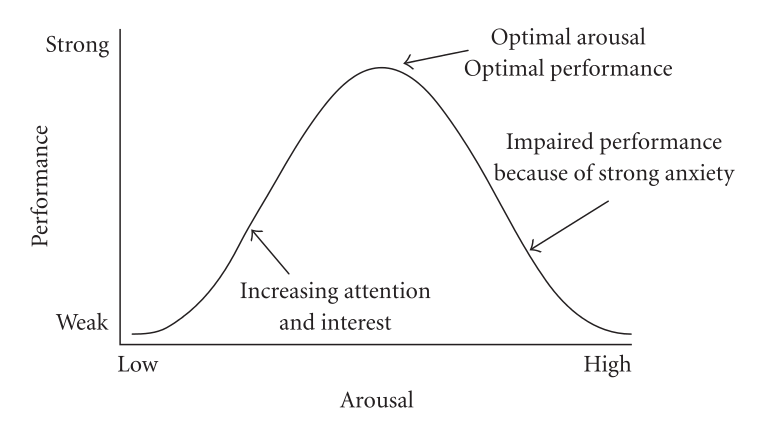10.4 Stress and Learning
The primary focus of this chapter has been on healthy development and the advantages that sociocultural environment can have. However, environments are not always positive and do not always promote growth. School and home environments that are full of stress and threat can impede learning. Psychological stress occurs in situations where there is an external trigger that evokes a feeling of being threatened. This is different from anxiety, which has many of the same negative feelings, but these don’t go away when the external stressor is removed. Stress and threats at school can come from educational consequences such as lower grades or detention (Jensen, 1998). They may stem from bullying occurring at school, on the bus, or in athletic sports leagues. Stress can occur in the home environment as well. Poverty, drug abuse, and domestic abuse are far more common than many realize. The CDC Nationwide Youth Risk Behavior Survey (CDC, 2017) found that almost 9% of high school students had been involved in a physical altercation at school, the percentage was much higher when all situations were taken into account, particularly for males. About 7% of students did not attend school in the month prior to taking the survey because they felt unsafe. Roughly 20 percent of students in middle and high school report being victims of bullying during the school year. This percentage has decreased over the past decade (CDC, 2017). The consequences of stress and threat are widespread and include influences on learning.
Stress has dramatic physical consequences. When encountering a stressor there are fast and slow physiological responses. The fast system engages the sympathetic nervous system to release epinephrine from the adrenal glands. This prepares the individual for an immediate response to a situation. This fast-acting system can be useful in reacting to an immediate threat. The second slow-acting system invokes the release of cortisol, a glucocorticoid that works on many body systems, for example, releasing glucose. Cortisol levels take 20-30 minutes to reach a peak level. Cortisol levels are regulated by the hippocampus, which we know plays a critical role in learning. Vogel and Schwabe (2016) identified how stress can impact learning and memory at many levels of processing. If there is stress at the time of encoding and consolidation, there may be an enhancement of memory. We can see this in our strong memories of emotional or traumatic events. We see a different effect when the stress comes at the time of retrieval, such as when taking an exam. Stress is especially detrimental to the integration of new information into existing knowledge. Memory impairments are often reported in stress-related mental disorders such as post-traumatic stress disorder and generalized anxiety disorder.

Yerkes and Dodson, Hebbian, CC0, via Wikimedia Commons
Long Description
Description of the image
Title: Arousal and Performance Levels
Graph labeled Performance on the Y axis and Arousal on the X axis. The bottom of the Y axis is labeled Weak and the top is labeled Strong. The left of the X axis is labeled Low and the right is labeled High. There is a bell-shaped line that curves up then back down. The beginning of the line says “Increasing attention and interest”. The peak of the curved line says “Optimal arousal and Optimal performance”. The latter end of the curved line says “Impaired performance because of strong anxiety”.
Given the high rates of stress, it is important to consider ways to reduce stress, and thereby provide the optimal level of arousal for learning. It is worth noting that many of stress-reduction techniques also help improve anxiety levels. Working to reduce stressful situations is important. Focusing on stress prevention can include building psychological resilience. One very effective technique is exercise, even a 10-minute daily walk can reduce stress. Psychologist use many effective stress reduction techniques as part of therapy, such as mindfulness meditation (Goldberg et al., 2018), progressive relaxation and grounding techniques. Some of these can be implemented on your own (See Links to Learning). Other tips for reducing stress include maintaining a social support network (Ozbay et al., 2007), eating and sleeping well, and taking time to be with nature (Ulrich et al, 1991).
Link to Learning
For a brief overview on stress-reduction techniques see: American Psychological Association
To learn more about stress see the American Psychological Society page: American Psychological Association
An NPR podcast on meditation and VR as tools to reduce stress: NPR WPSU
